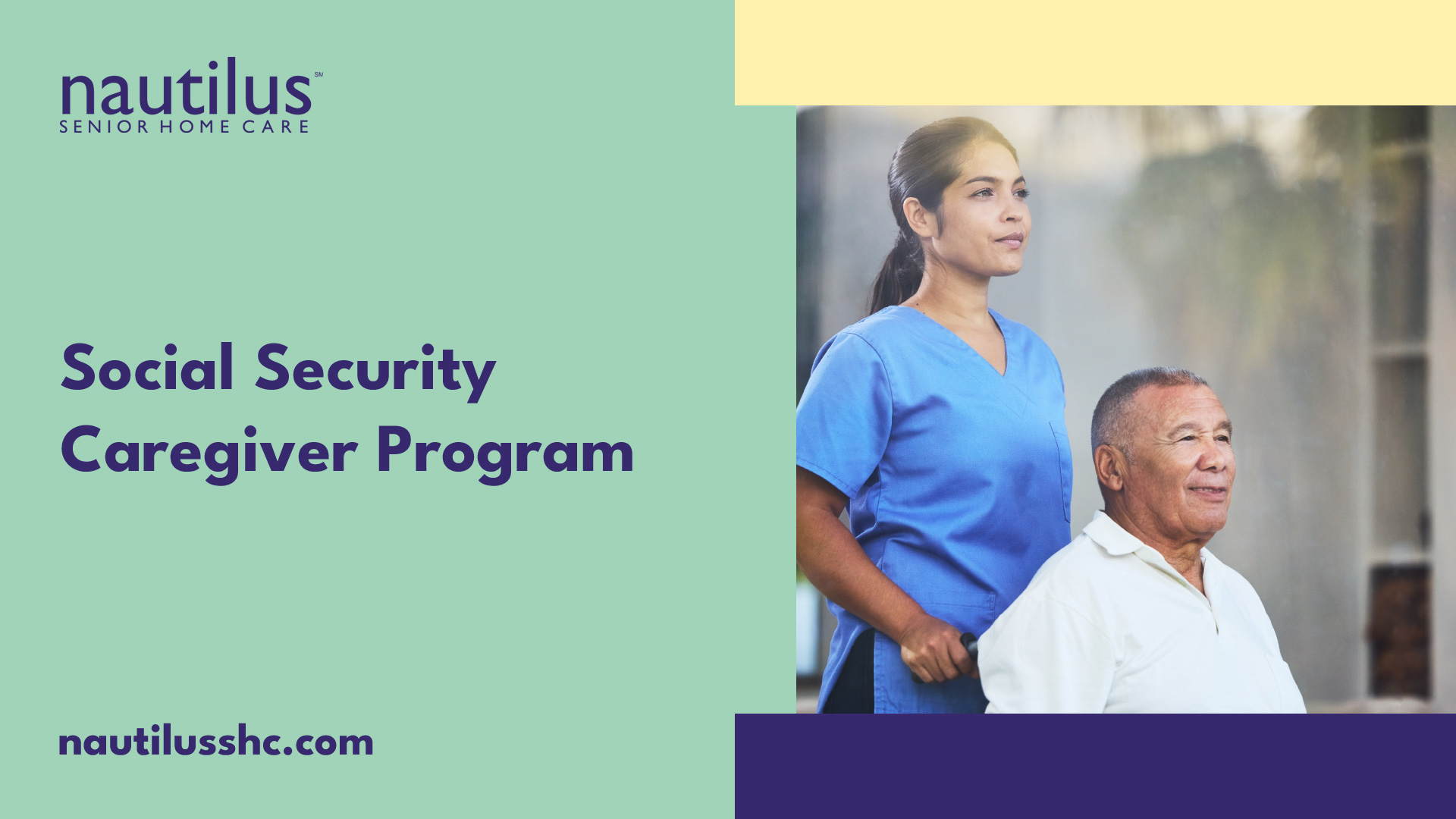Understanding the Social Security Caregiver Program
The Social Security Caregiver Program is a government initiative designed to provide financial assistance to individuals who serve as caregivers for their loved ones. This program aims to support caregivers who dedicate their time and efforts to taking care of family members or friends who have disabilities or serious medical conditions.
| Key Takeaway | Explanation |
|---|---|
| Unpaid caregivers may qualify | The program is designed for caregivers who provide unpaid support to loved ones with serious medical conditions or disabilities. |
| Eligibility depends on multiple factors | Relationship, level of care, age, income limits, and legal status all affect eligibility. |
| Benefits are tied to Social Security | Payments are generally based on the care recipient’s Social Security benefits and PIA. |
| Documentation is essential | Accurate medical, identity, and income records are required to apply and stay eligible. |
| Ongoing reporting is required | Any changes in income, caregiving status, or living situation must be reported promptly. |

What is the Social Security Caregiver Program?
The Social Security Caregiver Program, also known as the Caregiver Credit, is a program that offers financial support to unpaid caregivers. It recognizes the valuable role that caregivers play in providing care and assistance to those in need. Under this program, caregivers may be eligible to receive caregiver credits, which can contribute to their future Social Security benefits.
| Category | Key Details | Important Notes |
|---|---|---|
| Program Purpose | Provides financial recognition and support to unpaid caregivers assisting loved ones with disabilities or serious medical conditions. | Aims to protect caregivers’ future Social Security benefits. |
| Eligibility Requirements | Family relationship, qualifying medical condition, substantial unpaid care, age 18+, and residency/legal status. | Specific rules may vary by region and SSA guidelines. |
| Types of Benefits | Caregiver Allowance and Dependent Benefits based on relationship and care recipient’s benefits. | Not all caregivers qualify for both benefit types. |
| Payment Calculation | Based on care recipient’s Primary Insurance Amount (PIA) and a percentage allocation. | Actual payments may vary due to additional factors. |
| Application Requirements | Identity proof, relationship documents, medical evidence, residency, income records, and caregiver agreement (if required). | Having documents ready can speed up approval. |
| Caregiver Responsibilities | Maintain eligibility, provide ongoing care, meet income limits, and submit accurate documentation. | Failure to comply can affect benefits. |
| Reporting Changes | Income, living situation, caregiving status, or legal status changes must be reported promptly. | Prevents overpayment or underpayment issues. |
| Additional Resources | National Family Caregiver Support Program, Area Agencies on Aging, support groups, and local resource centers. | Support focuses on education, respite, and emotional well-being. |
Eligibility for the Social Security Caregiver Program
To be eligible for the Social Security Caregiver Program, certain criteria need to be met. Here are some key eligibility requirements:
- Relationship: The caregiver must be a family member or close relative of the person they are caring for. This includes spouses, children, parents, siblings, and grandparents.
- Care Recipient’s Condition: The care recipient must have a disability or serious medical condition that requires assistance with daily activities.
- Extent of Care: The caregiver must provide substantial care and assistance to the care recipient, including help with personal care, household tasks, and medical needs.
- Unpaid Caregiving: Caregivers must provide care on an unpaid basis. If the caregiver receives payment for their services, they may not be eligible for the Social Security Caregiver Program.
- Age Requirement: The caregiver must be at least 18 years old.
It’s important to note that eligibility requirements may vary depending on the specific rules and regulations of the Social Security Caregiver Program in your region. It’s advisable to consult with the Social Security Administration or relevant government agencies to determine the eligibility criteria applicable to your situation.
Understanding the Social Security Caregiver Program and its eligibility requirements is the first step towards accessing the benefits and support available to caregivers. By fulfilling the necessary criteria, caregivers can take advantage of the program to secure their future and ensure financial stability.
Caregiver Benefits and Payments
The Social Security Caregiver Program provides important benefits and payments to eligible caregivers. Understanding the types of benefits available and how caregiver payments are calculated is crucial for caregivers seeking financial support.
Types of Caregiver Benefits
Under the Social Security Caregiver Program, there are two main types of caregiver benefits:
- Caregiver Allowance: This benefit is designed to provide financial assistance to caregivers who are providing care to a loved one. The caregiver allowance is based on the care recipient’s Social Security benefits and is paid directly to the caregiver.
- Dependent Benefits: In certain cases, caregivers may be eligible to receive dependent benefits based on their relationship to the care recipient. These benefits are intended to help offset the costs associated with caregiving.
The specific eligibility criteria for each type of caregiver benefit may vary, so it’s important to consult with the Social Security Administration or refer to their official website for detailed information.
Calculating Caregiver Payments
The amount of caregiver payments varies depending on several factors, including the care recipient’s Social Security benefits, the caregiver’s relationship to the care recipient, and the caregiver’s own work history and earnings.
To determine caregiver payments, the Social Security Administration typically considers the care recipient’s primary insurance amount (PIA), which is the monthly benefit amount they would receive if they started receiving benefits at full retirement age. The caregiver’s payment is generally a percentage of the care recipient’s PIA.
Here is a simplified example to illustrate how caregiver payments may be calculated:
Care Recipient’s PIA and Percentage for Caregiver Payment
$1,500 – 75%
In this example, if the care recipient’s PIA is $1,500, the caregiver would be eligible for a payment equal to 75% of that amount, which would be $1,125.
It’s important to note that this is a simplified example, and actual caregiver payment calculations may involve additional factors and considerations. To obtain accurate information about caregiver payments, it’s recommended to consult with the Social Security Administration directly or refer to their official resources.
Understanding the types of caregiver benefits and how payments are calculated can help caregivers navigate the Social Security Caregiver Program and access the financial support they need to fulfill their caregiving responsibilities.
Applying for the Social Security Caregiver Program
If you are a caregiver and interested in applying for the Social Security Caregiver Program, there are certain requirements and steps you need to follow. This section will outline the required documentation and the application process, including the timeline.
Required Documentation
When applying for the Social Security Caregiver Program, you will need to gather specific documentation to support your application. The required documents may include:
- Proof of identity: This can be a birth certificate, passport, or other government-issued identification.
- Proof of relationship: If you are caring for a child, you may need to provide the child’s birth certificate or adoption papers. If you are caring for an adult, you may need to provide legal documentation establishing your relationship.
- Proof of residency: You will need to provide proof of your current address, such as a utility bill or lease agreement.
- Medical evidence: This may include medical records or statements from healthcare professionals that verify the need for caregiving services.
- Employment records: If you are currently employed, you may need to provide proof of your income, such as pay stubs or tax returns.
- Caregiver agreement: In some cases, you may need to submit a caregiver agreement or contract that outlines the responsibilities and expectations of the caregiving arrangement.
It’s important to gather all the necessary documentation before starting the application process. This will help expedite the review of your application and ensure that you meet the eligibility criteria.
Application Process and Timeline
To apply for the Social Security Caregiver Program, you can either complete an online application or visit your local Social Security office. The application process typically involves the following steps:
- Fill out the application: Provide accurate and detailed information about yourself, the person you are caring for, and your caregiving responsibilities. Be sure to include all relevant documentation as supporting evidence.
- Submit the application: Once you have completed the application, submit it online or in person at your local Social Security office. Make sure to retain a copy of the application for your records.
- Review and evaluation: The Social Security Administration will review your application and supporting documents to determine your eligibility for the caregiver program. This process may take several weeks.
- Decision notification: You will receive a decision letter from the Social Security Administration informing you of their decision regarding your application. If approved, the letter will outline the caregiver benefits you are eligible to receive.
- Appeals process: If your application is denied, you have the right to appeal the decision. The appeals process involves submitting additional documentation or requesting a hearing to present your case.
It’s important to note that the application timeline may vary depending on various factors, including the complexity of your case and the workload of the Social Security Administration. It is advisable to apply as early as possible to ensure timely consideration of your application.
By following the application process and providing the required documentation, you can initiate your application for the Social Security Caregiver Program. Make sure to carefully review the eligibility criteria and accurately complete the application to increase your chances of receiving caregiver benefits.
Rights and Responsibilities of Caregivers
As a caregiver participating in the Social Security Caregiver Program, it’s important to understand your rights and responsibilities to ensure continued eligibility and receive the benefits you are entitled to.
Maintaining Eligibility
To maintain eligibility for the Social Security Caregiver Program, caregivers must fulfill certain requirements and responsibilities. These include:
- Providing Care: Caregivers must continue to provide care to the eligible individual who requires assistance with daily living activities or supervision due to a qualifying medical condition.
- Residency: Caregivers must reside in the same household as the individual receiving care. This ensures that the caregiver is readily available to provide necessary support and assistance.
- Legal Status: Caregivers must have legal status in the United States. This includes being a U.S. citizen, a U.S. national, or having lawful noncitizen status.
- Income Limits: Caregivers need to meet the income limits set by the Social Security Administration (SSA) to qualify for the program. These limits may vary depending on factors such as household size and location.
- Documentation: Caregivers must provide accurate and up-to-date documentation to support their eligibility, such as proof of identity, residency, and income. It’s important to keep these documents organized and readily available for any future reviews or audits.
Reporting Changes and Updates
As a caregiver, it is your responsibility to report any changes or updates to the SSA promptly. This helps ensure that your caregiver payments are accurate and that you remain in compliance with program requirements. Examples of changes that should be reported include:
- Changes in Income: If your income exceeds the limits set by the SSA, you must report this change. It’s essential to provide updated documentation to support the change in income.
- Changes in Living Situation: If your living situation changes, such as moving to a different address or no longer residing in the same household as the care recipient, you must inform the SSA.
- Changes in Caregiving Status: If there are changes in the caregiving responsibilities or if the care recipient’s condition improves, it is important to report these changes to the SSA.
- Change in Legal Status: If there are any changes in your legal status, such as becoming a U.S. citizen or obtaining lawful noncitizen status, it is crucial to update your information with the SSA.
By promptly reporting changes and updates, you can ensure that your caregiver benefits are accurately calculated and that you remain compliant with program guidelines. Failure to report changes may lead to overpayment or underpayment of benefits, which can result in potential financial and legal issues.
As a responsible caregiver, it is essential to stay informed about your rights and responsibilities within the Social Security Caregiver Program. By maintaining eligibility and reporting changes and updates, you can continue to receive the benefits you deserve while providing vital care and support to your loved ones.
Additional Resources for Caregivers
Being a caregiver can be both rewarding and challenging. Fortunately, there are various support and assistance programs available to help caregivers navigate their roles effectively. Additionally, there are helpful tips and advice that can make the caregiving journey a little easier. In this section, we will explore these additional resources for caregivers.
Support and Assistance Programs
Caregivers can take advantage of support and assistance programs that provide valuable resources and services. These programs aim to offer guidance, respite care, and financial assistance to alleviate some of the burdens associated with caregiving. Here are a few examples of support programs available:
Support Program and Description
National Family Caregiver Support Program: Provides information, assistance, and counseling to caregivers, as well as respite care services.
Aging and Disability Resource Centers: Offers a range of services, including information, referral, and assistance with accessing support programs in local communities.
Area Agencies on Aging: Provides services and programs specifically designed for older adults and their caregivers, including caregiver training and support groups.
Caregiver Support Groups: These groups bring together caregivers facing similar challenges, providing a supportive environment to share experiences and advice.
It’s important for caregivers to explore these programs and connect with resources that can address their specific needs. These programs can provide valuable information, emotional support, and practical assistance, allowing caregivers to navigate their caregiving responsibilities with greater confidence.
Helpful Tips and Advice for Caregivers
In addition to support programs, there are several helpful tips and advice that caregivers can benefit from. These tips are aimed at promoting self-care, managing stress, and maintaining overall well-being. Here are a few key tips for caregivers:
- Take care of yourself: Prioritize your own well-being by getting enough rest, eating nutritious meals, and engaging in activities that bring you joy and relaxation.
- Seek support: Don’t hesitate to reach out to friends, family, or support groups for emotional support. Sharing your experiences and concerns with others who understand can be immensely helpful.
- Delegate tasks: Don’t be afraid to ask for help and delegate tasks to other family members or friends. Sharing the responsibilities can help prevent burnout and ensure that the care recipient’s needs are met.
- Stay organized: Keep track of important documents, appointments, and medications to stay organized and ensure that nothing falls through the cracks.
- Educate yourself: Take the time to learn about the care recipient’s condition or illness. Understanding their needs and having knowledge about available resources can empower you to provide better care.
By utilizing these helpful tips and taking advantage of support and assistance programs, caregivers can enhance their caregiving experience and find the support they need. Remember, caring for yourself is just as important as caring for your loved one, and seeking help is a sign of strength, not weakness.
| Question | Answer |
|---|---|
| Does Social Security pay all caregivers? | No. Only unpaid caregivers who meet specific eligibility criteria may qualify for benefits. |
| Do caregivers receive direct monthly payments? | In some cases, caregivers may receive payments based on the care recipient’s Social Security benefits. |
| Can a caregiver work while enrolled? | Yes, but income must remain within limits set by the Social Security Administration. |
| How long does the application process take? | Processing times vary, but applications often take several weeks for review and decision. |
| What happens if my application is denied? | You may appeal the decision by submitting additional documentation or requesting a hearing. |



